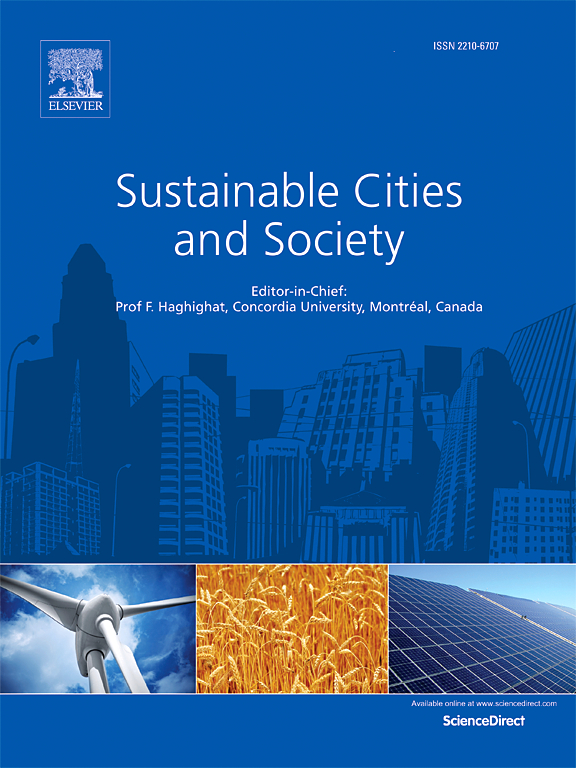Asymmetric influence of urban morphology changes on land surface temperature between daytime and nighttime
IF 10.5
1区 工程技术
Q1 CONSTRUCTION & BUILDING TECHNOLOGY
引用次数: 0
Abstract
Urban development is not solely about the outward expansion of city boundaries but also involves internal renewal within urban areas. While the warming effect of urban expansion is well-documented, the thermal impact of various urban morphology changes remains less clear. Our study investigates the changes in land surface temperature (LST) associated with urbanization, utilizing Local Climate Zone (LCZ) time-series data and satellite-derived LST measurements from three major Chinese urban agglomerations. Time series analysis was applied to examine LST variations over the period from 2003 to 2020. Our research indicates that urban renewal, predominantly characterized by vertical development, exerts an asymmetric effect on urban temperatures: it mitigates urban warming during daytime (-0.13±0.067 °C(mean ± se)) but intensifies it at night (0.20±0.02 °C (mean ± se)). The effect of urban expansion on urban warming is markedly more pronounced during the day (0.55±0.041 °C (mean ± se)) than at night (0.20±0.015 °C (mean ± se)). At the city scale, changes in urban morphology generally contribute to a warming effect, both diurnally and nocturnally. Urban expansion is identified as the primary urban morphology change contributing to the rise in LST. However, the divergent impacts of vertical development, which is likely to account for a larger share of future urbanization, must not be underestimated.
求助全文
约1分钟内获得全文
求助全文
来源期刊

Sustainable Cities and Society
Social Sciences-Geography, Planning and Development
CiteScore
22.00
自引率
13.70%
发文量
810
审稿时长
27 days
期刊介绍:
Sustainable Cities and Society (SCS) is an international journal that focuses on fundamental and applied research to promote environmentally sustainable and socially resilient cities. The journal welcomes cross-cutting, multi-disciplinary research in various areas, including:
1. Smart cities and resilient environments;
2. Alternative/clean energy sources, energy distribution, distributed energy generation, and energy demand reduction/management;
3. Monitoring and improving air quality in built environment and cities (e.g., healthy built environment and air quality management);
4. Energy efficient, low/zero carbon, and green buildings/communities;
5. Climate change mitigation and adaptation in urban environments;
6. Green infrastructure and BMPs;
7. Environmental Footprint accounting and management;
8. Urban agriculture and forestry;
9. ICT, smart grid and intelligent infrastructure;
10. Urban design/planning, regulations, legislation, certification, economics, and policy;
11. Social aspects, impacts and resiliency of cities;
12. Behavior monitoring, analysis and change within urban communities;
13. Health monitoring and improvement;
14. Nexus issues related to sustainable cities and societies;
15. Smart city governance;
16. Decision Support Systems for trade-off and uncertainty analysis for improved management of cities and society;
17. Big data, machine learning, and artificial intelligence applications and case studies;
18. Critical infrastructure protection, including security, privacy, forensics, and reliability issues of cyber-physical systems.
19. Water footprint reduction and urban water distribution, harvesting, treatment, reuse and management;
20. Waste reduction and recycling;
21. Wastewater collection, treatment and recycling;
22. Smart, clean and healthy transportation systems and infrastructure;
 求助内容:
求助内容: 应助结果提醒方式:
应助结果提醒方式:


